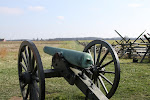The decades after the Civil War spawned more than its share of outlaws in Louisiana. None became so reviled by the public as the killer Lincoln Waggonner of Webster Parish. Among his victims were relatives, former friends, witnesses against him, and anyone who impugned his family's honor. Recognized as a handsome but bloodthirsty character, he became the most sought-after outlaw in northwest Louisiana. His archenemy, Tom Kinder, a former Claiborne Parish deputy, was believed responsible for many of the deaths in the infamous Ramsey-Tuggle feud that rivaled the better known Hatfield-McCoy feud in the number of bodies it produced. Suspected, arrested, and charged in numerous serious crimes in northwest Louisiana, Link Waggonner and Tom Kinder repeatedly escaped punishment. For years, the region tolerated their violence but eventually both men would meet violent deaths. Their demise began a rejection of the policy of violence prevalent after the Civil War.
For the first time, the story of these two outlaws told in book form: https://www.amazon.com/WILD-BOYS-Waggonner-Violence-Louisiana/dp/B0D5WRNXWC/

















